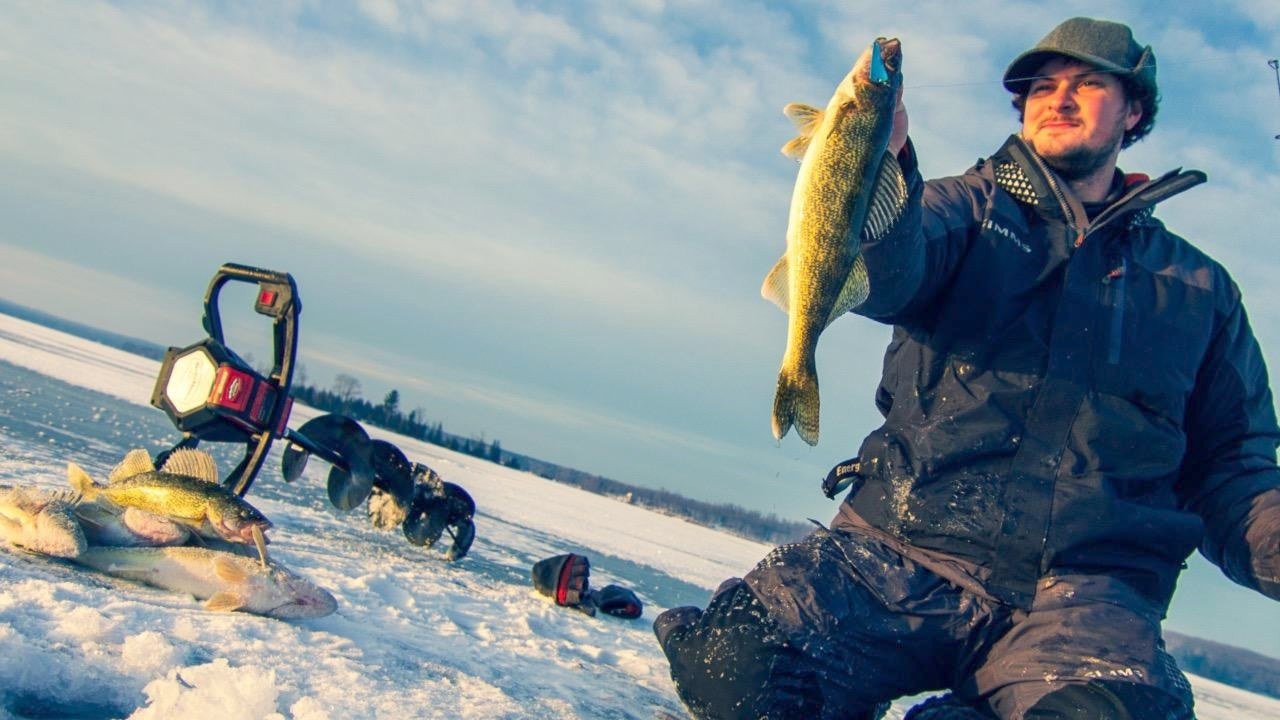Early ice is prime time to catch a pile of aggressive walleyes using jigging spoons. Wired2Fish’s McKeon Roberts discusses key locations, lures strategies, jigging methods and other ice fishing tips to turn walleyes into feeding machines that munch artificial lures over live bait.
As the lakes begin to freeze, avid hardware anglers anxiously await safe and fishable ice each year. The reason is that walleyes and many other predator fish are at a metabolic peak, which drives them to feed fanatically for a short period in early winter. The timing also correlates with the spawning movement of pelagic forage species like cisco, which are no longer locked in deepwater temperature and oxygen regimes. McKeon capitalizes on this by mimicking this flashy forage’s color patterns by using hues of blue and purple on his jigging spoons.
TACKLE USED
- VMC Tingler Spoon, color – Glow Blue Shiner, 3/16-ounce
- Frabill Bro Series Ice Rod, 30-inch Light
- Frabill Bro Series Spinning Reel
- Sufix Advance Ice Mono, 6lb
- Frabill Pro-Thermal Tip-Up
- Sufix Tip-Up Line
- VMC Octopus Hook, size: 1/0
- StrikeMaster Bait Puck
- StrikeMaster Lithium 40v Electric Ice Auger
- StrikeMaster Lite-Flite Lazer Drill
- Simms Challenger Insulated Jacket
- Simms Challenger Insulated Bibs
- Simms Guide WindBloc Foldover Mitts
- MarCum M5 Dual Beam Flasher
- MarCum Lithium Ion Shuttle
A successful early ice outing starts with proper planning of where to intercept walleyes and their forage. Roberts studies lake maps with Humminbird’s FishSmart app to select key feeding areas and structures. These areas are typically main-lake humps with access to deep water where pelagic baitfish come and go. Walleyes use these structures to push bait onto steep breaks during prime morning and evening feeding windows.
Once these areas are located, Roberts starts fishing by deploying a set line (usually tip-up), which allows him to start “passively” fishing while setting up and drilling holes across the structure. Being that walleyes are on the chew, aggressive jig strokes call in fish and appeal to their aggressive tendencies. Knowing the mood of each fish helps you determine what action is desired to trigger a strike. Roberts accomplishes this by paying close attention to his sonar. Lastly, he details his favorite jig cadences for different fish moods and his preferred rod and line setup for spoon fishing this size class of walleye.












